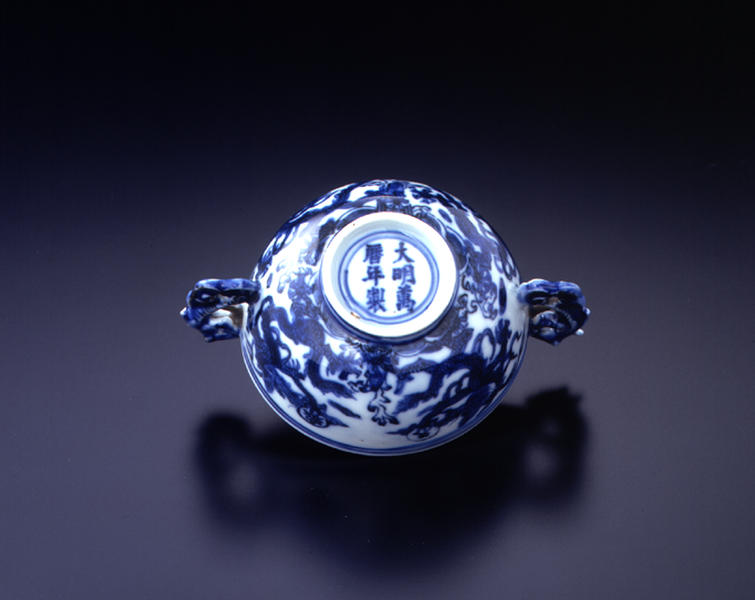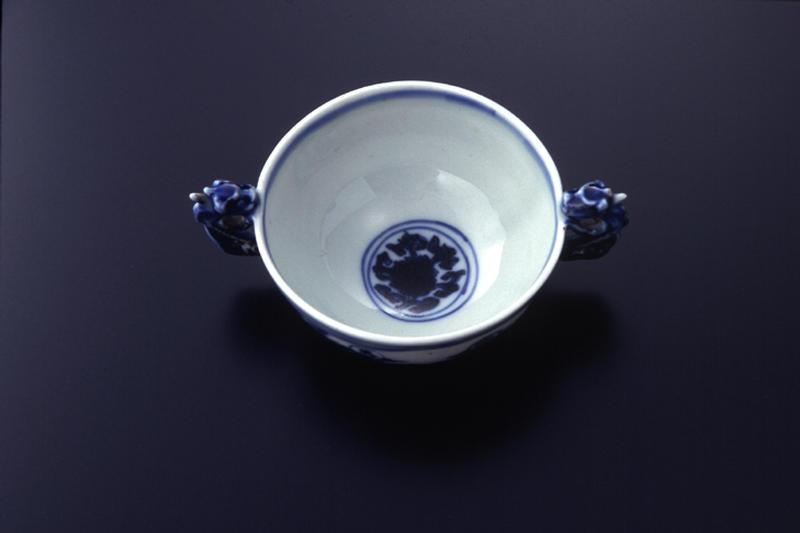Cup with Dragon -shaped Handles
- Jingdezhen kiln, China
- China, Ming dynasty
- 16c
- Jingdezhen ware, blue-and white porcelain
- H-4.3 D-7 W-10.2
Catalogue Entry
White porcelains decorated with underglaze blue patterns are often called “blue flowers" in Chinese pottery terminology. At times the“flower" used in the name referred to designs, and in Japan these wares are known as “sometsuke", or literally “dyed" wares. Among the blue and white wares of the Ming dynasty, the imperial wares, i.e. those porcelains created at such imperial kiln sites as Jingdezhen for use specifically by the imperial court, are immediately discernible for their high quality and refinement. In these wares, the imperial reign date was inscribed in the underglaze of the foot interior, and this is one of the indications of a piece created at one of the imperial kilns. This bowl has two dragon‐shaped handles and the surface of the bowl is decorated with two dragons on each side. The dragons hold jewels inscribed with the characters. Coral is shown between the dragons and this would suggest that the design represents the Dragon Palace under the sea. Plants and flowers are shown on the interior of the bowl, and the imperial kiln mark is inscribed on the interior of the foot. Wanli era blue and white ware marks the final period of the Jingdezhen kilns during the Ming dynasty. Here the bowl shows a vivid blue underglaze decoration in a formal, and yet, approachable style.


